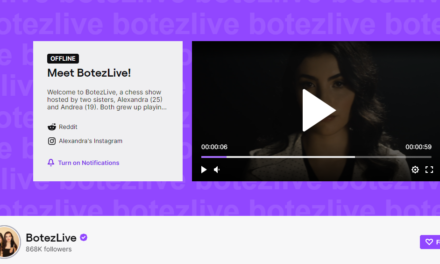Can you answer a prospective sponsor or advertiser’s question within minutes of their outreach?
If you have a completed media kit, you could kick off the potentially fruitful partnership on a good foot. But, if you must scramble to compile the answers and format them into a professional-looking document, the potential collaboration will be delayed or may not even start.
To be ready for incoming requests and prepared to send outgoing requests to boost your revenue streams, do these five things:
1. Write a detailed “about” page on your website: As a content creator for The Tilt, I often go directly to a creator’s “about” page to better understand who they are, what they do, and why they do it. A prospective sponsor and advertiser does the same.
Too often, I am disappointed to find a sparse page (or none at all) or text that doesn’t really tell me about the entrepreneur and their business.
You don’t need to write a novel, but take a few paragraphs to explain who your target audience is and how your business helps them. If you want, use the verbiage from your mission statement.
2. Maximize your social bios: Using social media as a marketing tool means you should craft well-thought-out profiles or bios. On Instagram, include a catchy line or two that explains how your business helps your audience and a link to your primary goal (i.e., subscribers) or a detailed overview of you and your business. With LinkedIn, maximize the headline and complete every visible element. Take a similar tack with your other profiles – making the most of the opportunity without overwhelming the audience.
3. Create a media kit: Give a prospective sponsor or advertiser the rundown of your business and how it could help them achieve their goals. In the media kit, you should:
- Detail who the target audience is and how the business helps them.
- Describe the content format(s), channels of operation, publishing frequency, etc.
- Include a few current metrics, including the audience size as well as ones relevant to your business type.
- Share your bio to highlight what makes you the right person to lead this business and earn the trust of your audience, sponsors, advertisers, etc.
- Boost your credibility by including third-party mentions of you or your business, such as articles in the media, podcast guest spots, speaking engagements, etc. Add the links whenever possible.
Publish the media kit on your website. It could be hosted on a page called “How To Connect With This Audience” or “Partnership Opportunities.” Don’t get too creative in the page name. Make it easy for prospects to find and know what it’s about.
Design the information into a media kit that can be printed (post the PDF to your site). You can design it yourself or use a wealth of free templates from Canva and Adobe Express.
4. List the opportunities: A media kit is also a good place to outline how these brands can work with you. A few years ago, YouTuber entrepreneur and CEX presenter Roberto Blake shared his 11-page media kit with Insider.
On one page, he lists the opportunities for brands to work with him. He follows that with specifics for the more detailed partnerships. For example, a branded integration on YouTube includes high-quality video and editing, closed captions, a social media post, a call to action in the description, and a feature in his newsletter.

By outlining your services, brands can begin to recognize if their chosen distribution channels and formats mesh with yours. They also can envision what the partnership would look like.
5. Contemplate the pricing question: Publishing your fees in the media kit is something you should deliberate. Jonathan Rick can help in that contemplation with his list of pros and cons of publicly posted pricing. In general, it’s easier to publish rates for opportunities without variables, like a newsletter ad or a sponsored article, than it is for partnerships with multiple or adjustable benefits. For these variable pricing opportunities, share your contact information with a note indicating you create custom packages to better ensure the collaboration delivers what the partner seeks.
About the author
Ann regularly combines words and strategy for B2B, B2C, and nonprofits, continuing to live up to her high school nickname, Editor Ann. An IABC Communicator of the Year and founder of G Force Communication, Ann coaches and trains professionals in all things content. Connect with her on LinkedIn and Twitter.



![A Successful Content Creator Does These 4 Things in Their Content Business [Research]](https://www.thetilt.com/wp-content/uploads/2021/07/Successful-2-440x264.jpeg)






